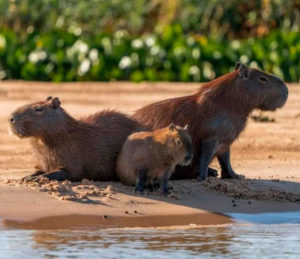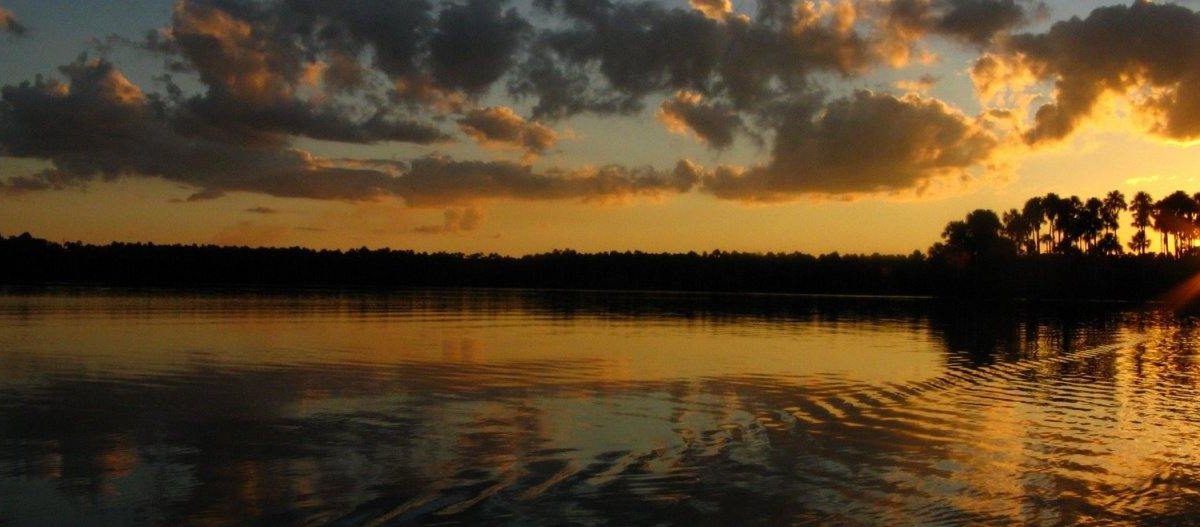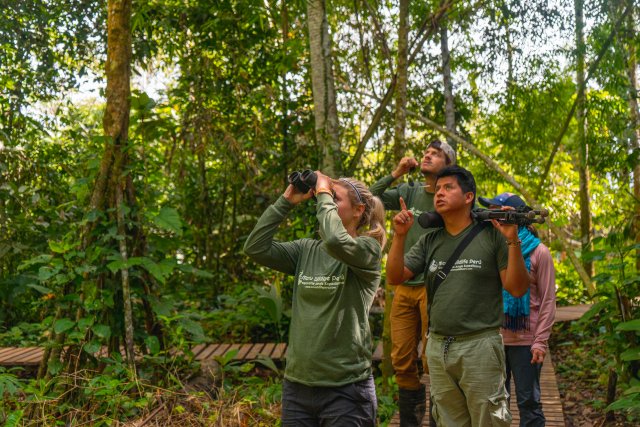The Best Time To Visit Tambopata In Peru

Why Visit The Chuncho Macaw Clay Lick
April 2, 2024One of the most diverse areas of rainforest in all of South America, the Tambopata reserve in Peru truly is an incredible place to visit.
Visiting in different months can offer different experiences for travelers, and as such it’s important to know what to expect in each season.
In this guide we’ll explore the best time to visit the Tambopata Jungle in Peru, as well as how the weather can vary at different times of the year. We’ll also cover the advantages of visiting in both the dry and wet seasons.
When Is The Best Time To Visit Tambopata In Peru?
Quick Answer: The best time to head to Tambopata really depends on you, and what you want to see and do.
Those who want to see more animals will want to visit during the dry season, which runs from April until September.
During these months there is less rain, which means the rivers shrink in size and make it easier to spot marine wildlife such as Giant River Otters and Anacondas. Land animals are also easier to spot as they head out onto the exposed river banks to feed.
If you instead want a more authentic experience with less tourists around, then the wet season will be a better choice for you. Running from October until March, the rains are heavy yet short, meaning you can still enjoy exploration without getting drenched the whole day.
You’ll also see the jungle with a much more vibrant green, as well as certain plants (such as the Chestnut Tree – which measures up to 40 meters high) bearing tropical fruits.
Regardless of which season you pick, our Jungle Lodges are well-equipped for all weather and offer some incredible views of the surrounding Amazon Rainforest.

The Advantages Of Visiting Tambopata In The Dry Season
The dry season is by far the most popular time for tourists to visit the Tambopata Jungle in Peru, which runs from April until September.
Firstly the weather is more consistent, meaning you’ll have more blue skies and stable hiking paths during your treks. Of course it can still rain (given it’s the rainforest after all), however the showers are much smaller and less frequent, with between 1.5-5 inches falling throughout each of these months.
The dry season is also great for seeing certain types of animals. Given there is less rainfall, the rivers are much smaller and force the animals closer together, making them easier to spot. This includes Caiman, Giant River Otters and Anacondas. Due to the larger banks present next to the river, it will also be easier to see land-based mammals such as Capybara and Jaguars who come to feed and take in the sun.
The Advantages Of Visiting Tambopata In The Wet Season
The wet season is less preferred, however it also offers its own unique advantages for tourists that visit during this period.
Given there is more rainfall (between 6-12 inches within each month from October until March), it will be much easier to navigate the rivers by boat. During the dry season this can be more complicated, and also take longer given certain stretches can be impassable. This means we can also head deeper into the rainforest during tours and have a chance of seeing rarer wildlife.
The Tambopata Jungle also becomes more alive during the wet season. Trees and plants show-off a more vivid green color, and we’ll also be able to see ripe fruits hanging down from the jungle canopy. Although Tambopata is still very much an off-the-beaten-path destination to visit, during the wet season it’s even less likely that you’ll see other groups which will make for a more immersive and surreal jungle experience.

Other Things To Know About Visiting The Tambopata Jungle
It’s important to mention that between the months of May until September, temperatures can drop substantially due to cold winds carried up from Argentina. These typically last between a day to a few days, so be sure to bring warm clothes in case this cold front comes in during your trip.
Of course we can’t talk about Tambopata without mentioning Puerto Maldonado, which is the gateway city to the jungle. Most likely you’ll arrive here before your tour, and also spend some time in the city before you depart the Madre de Dios region. The city will be quite busy throughout the year, although those who love cultural festivals will want to know that July 10th marks the anniversary of Puerto Maldonado, and is accompanied with local parades and celebrations throughout the city.
The Best Time To Visit Tambopata In Peru
And that’s all for this guide on the best time to visit Tambopata in Peru.
This incredible region is full of virgin rainforest and many rare animal species, and also offers travelers a more authentic jungle experience when compared to other Amazon cities (such as Iquitos or Manaus in Brazil).
It’s important to think about which season you’ll visit Tambopata, given each offers different perks and also certain challenges too. We personally think both are great times to visit for different reasons, where you’ll have a really memorable experience exploring the Amazon Jungle.
Are you hoping to see rare animals in Tambopata? Be sure to look at our 4 Day Adventure Tour, where you can see Giant River Otters, Tapir, Macaws and more.



